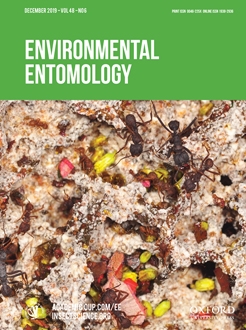Diverse and robust predator communities are important for effective prey suppression in natural and managed communities. Ants are ubiquitous components of terrestrial systems but their contributions to natural prey suppression is relatively understudied in temperate regions. Growing evidence suggests that ants can play a significant role in the removal of insect prey within grasslands, but their impact is difficult to separate from that of nonant predators. To test how ants may contribute to prey suppression in grasslands, we used poison baits (with physical exclosures) to selectively reduce the ant population in common garden settings, then tracked ant and nonant ground predator abundance and diversity, and removal of sentinel egg prey for 7 wk. We found that poison baits reduced ant abundance without a significant negative impact on abundance of nonant ground predators, and that a reduction in ant abundance decreased the proportion of sentinel prey eggs removed. Even a modest decrease (∼20%) in abundance of several ant species, including the numerically dominant Lasius neoniger Emery (Hymenoptera: Formicidae), significantly reduced sentinel prey removal rates. Our results suggest that ants disproportionately contribute to ground-based predation of arthropod prey in grasslands. Changes in the amount of grasslands on the landscape and its management may have important implications for ant prevalence and natural prey suppression services in agricultural landscapes.
How to translate text using browser tools
12 November 2019
Reducing Native Ant Abundance Decreases Predation Rates in Midwestern Grasslands
B. D. Wills,
T. N. Kim,
A. F. Fox,
C. Gratton,
D. A. Landis

Environmental Entomology
Vol. 48 • No. 6
November 2019
Vol. 48 • No. 6
November 2019
diversity
Lasius neoniger
natural enemies
predation services
prey suppression




